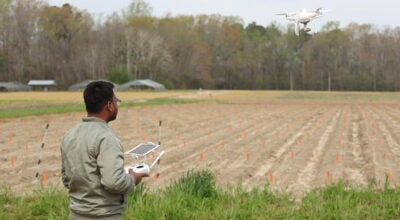Powwow
Published 11:15 pm Saturday, August 15, 2009
In many ways, the Nansemond Indian Tribe’s 21st annual powwow was like a family reunion.
There was dancing, eating and reminiscing with old friends. Several generations of a family celebrated together, the oldest ones introducing the youngest ones to centuries-old traditions.
The celebration so strongly resembled a family reunion, one member of the tribe said, because that is why powwows originated.
“Hunter/gatherer societies, when they get to 1,000 people, get hard to maintain,” Keith Smith, a member of the Nansemond Tribal Council, said. When American Indian tribes in centuries past grew to about 1,000 people, several clans would split off and live in another location.
Once a year, however, all the members of the tribe came back together to see relatives and friends left behind and share new methods of survival.
“Basically, it was like a family reunion,” Smith said, adding that the word comes from the Algonquin term “pau wau.”
Fast-forwarding to the 1950s and 1960s, many American Indian tribes revived the tradition as a way of strengthening their fast-disappearing heritage — the Virginian tribes being no exception.
The Nansemond powwow at Lone Star Lakes Lodge in Chuckatuck featured dancing by an inter-tribal group, traditional songs by the Eastern Bull Singers, education about American Indian customs and a survival skills demonstration. The powwow continues Sunday with a similar schedule, with grand entry at 1 p.m.
Throughout the day, talk circled of the Nansemonds’ fight to be federally recognized as a tribe, and their desire to once again obtain the land at Lone Star Lakes to build a recreation of a traditional Nansemond village.
However, the purpose of the powwow simply is to come together and celebrate, tribal members said.
Phyllis DeLong, a Nansemond member, said the powwow is a way to celebrate and give back.
“The music, to me, is a celebration of the Indian people,” DeLong said. “The drumbeat, to me, is the heartbeat of Mother Earth. We dance to give back to Mother Earth.”
DeLong is descended from the Nansemonds through her mother, while her father is Cherokee by birth. When American Indians from different tribes marry, the husband and children join the tribe of the mother, DeLong said.
David Holland, an Accohannock tribe member, pointed to the family aspect as a reason he attends many powwows in the area.
“I’ve got relations in most of the lower Chesapeake tribes because we all intermarried,” he said. “Sometimes I have to back up 300 years to find the cross, but that’s the way it is.”
Holland has been coming to the Nansemond powwow for about 10 years, he said.
“I don’t think I’ve missed it,” he said, noting the cooler weather than in past years.
One aspect of powwows that has changed since the earliest Americans, however, is the educational opportunities.
“This gives us an opportunity to educate the non-Indian public … and dispel the myths and lies,” Keith Smith said. “We can educate people with the truth.”






